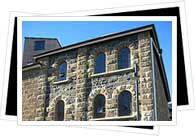Churrigueresque Architecture in Spain Just as the Plateresque style is a branch of the Renaissance, within the realm of Baroque architecture is the Churrigueresque style, which lasted from the 1600's until around 1750. The word Churrigueresque hails from the Churriguera family, which was really more of an architectural dyansty of brothers, descendents and pupils. The Churrigueras- especially José, Joaquín, and Alberto- made their most significant mark in Salamanca, naturally making Salamanca the ideal city in which to see the style in its purest form!
Just as the Plateresque style is a branch of the Renaissance, within the realm of Baroque architecture is the Churrigueresque style, which lasted from the 1600's until around 1750. The word Churrigueresque hails from the Churriguera family, which was really more of an architectural dyansty of brothers, descendents and pupils. The Churrigueras- especially José, Joaquín, and Alberto- made their most significant mark in Salamanca, naturally making Salamanca the ideal city in which to see the style in its purest form!
Churrigueresque Architecture Characteristics
Appearing to be almost a Plateresque revival, Churrigeresque architecture is ornamental by nature. Churrigueresque architecture integrates sculpture and architecture to the extreme- perhaps even more so than Plateresque. Façades and altarpieces are the most common features of the style, boasting integrated statues, floral motifs, and otherwise capriciously decorative adornment in general. One central feature is the use of the estipite, a wholly ornamental column shaped like an inverted cone, which was integrated for aesthetic purposes- while appealing to the eye, it supports nothing.
As the epoch of Churrigueresque architectural glory began to wind down, architects did begin to shift towards the balance and sobriety of the oncoming neoclassical style, a transition of which you can see early elements in the Colegio de Calatrava.
Churrigueresque Architecture in Salamanca
Wherever Plateresque architects had accidentally left Salamanca façades bare, Churrigueresque architects were there to step in and cover them up with their own style of sculpted tapestries. The most famous example of Churrigueresque architecture in Salamanca is the stunning Plaza Mayor, considered the most beautiful main square in Spain. Other examples of Churrigueresque architecture can be found throughout the East Salamanca Quarter: the altarpiece of the Convento de San Esteban (Convent of Saint Stephen), the church's ceiling in the Convento de Santa Clara (Convent of Saint Clara), and the Colegio de Calatrava (Calatrava School).